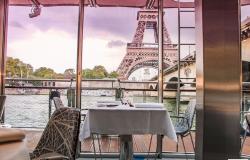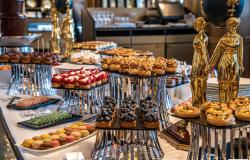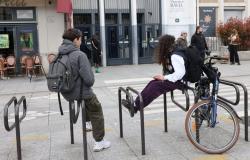
This year Paris Photo is launching the Voices sector which highlights a selection of artists or galleries through the eyes of an exhibition curator. Three curators were invited to design a proposal around a theme of their choice: the founder of FotoMexico Elena Navarro imagined a project around Latin American photography, Azu Nwagbogu, founder and president of Lagos Photo Festival explores the way in which artists reappropriate archives while the author and independent curator Sonia Voss is interested in the room as a platform of expression through the prism of the Eastern European scene and the North after the Cold War.
Your proposal is titled Four Wallswhat are its themes?
I have been interested for some time in the way in which the coercive systems of Eastern and Northern Europe in the 1970s and 1980s led artists to develop strategies very focused on the intimate and the space domestic. These spaces, often restricted, have been transformed into real places of creation thanks to the inner freedom and imagination of the artists. This is something that I find very strong and which continues to strike today, in very diverse ways from one country to another. We worked with the participating galleries to highlight figures who are sometimes still unknown to the general public and who talk about these forms of creation, these strategies that are very specific to these territories. Furthermore, we did not want to lock these historical positions in the past but on the contrary show how they continue to influence contemporary creation, by creating bridges between the past and the present.
Which countries are represented?
First there is Ukraine with the Alexandra de Viveiros gallery, very attached to the defense of the Kharkiv school for several years. The Anca Poterasu gallery represents Romania with photographer Aurora Király and the collective of experimental filmmakers kinema ikon which has existed since the 1970s. The Czech Republic is present with Fotograf Contemporary which shows two women, Libuše Jarcovjáková and Markéta Othová. The Monopol gallery brings together a Polish artist Zygmunt Rytka and an East German artist, Gabriele Stötzer. Finally, Kaunas Photography brings together several Lithuanian photographers. The latter three are participating in Paris Photo for the first time. One of the reasons for existence of Voices is indeed to open the doors to new actors.
All these artists are linked by visual strategies that divert the coercive systems in which they emerged. You mention in your introductory text “the sovereignty of their bodies, the’imagination and, often,’humor” with which they face restrictions on freedom. This involves in particular staging, compositional games, intervention on the image, transcendence of everyday life… Are these strategies common to all countries?
The more we explore the photographs of these countries, the less we want to bring them together under the same label. Each country has a different history: I am thinking of historical events but also of the history of photography. In East Germany, avant-garde artists left the country in the 1930s and photography was built without the foundation of this avant-garde. In the Czech Republic or Poland, on the contrary, it is very present throughout the history of the 20th century. On the other hand, we have countries which have been more strongly marked by humanist documentary traditions, such as Lithuania. There are therefore obvious common features, linked to human experiences shared by the different countries of the “Eastern bloc” but also visual traditions specific to each.
How do you perceive the place of Eastern and Northern European photography on the international market?
In recent years I have observed the growing presence of galleries from this region on the market. In any case, institutions are increasingly interested in these countries. The Center Pompidou in particular has made a lot of effort to integrate these territories into its collections. American collections are also very attentive to these chapters in the history of photography.
Can you tell us about some of the works on the tour? ?
I can tell you about Roman Pyatkovka who is represented by Alexandra de Viveiros and whose work gives a great example of how these artists make their intimate space, their “home”, a field of experimentation, a laboratory . Pyatkovka made experimental photographs using naked bodies — the representation of which was prohibited at the time — onto which he projected images of official Soviet parades. From his bedroom, he created a multi-layered world, combining bold formal experiments and open critique of the regime. Another striking example is the work of Libuše Jarcovjáková, which some were able to discover at the Rencontres d'Arles in 2019. She lived and worked on the fringes of Czech society for a long time. The domestic space which was for her a space of withdrawal became an intimate theater where she put herself on stage with her friends, in the simplicity and exuberance of her private life.
More information:





